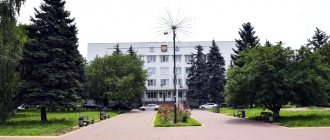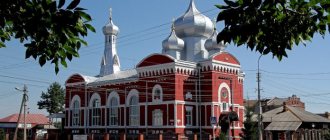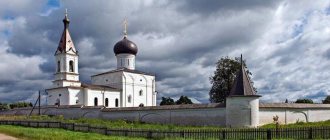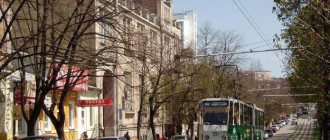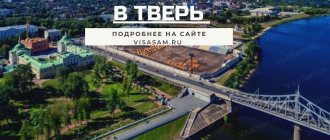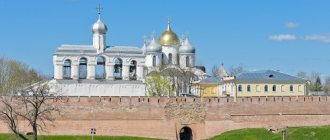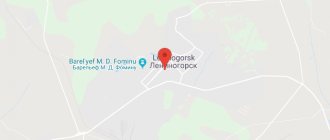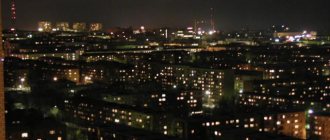Yuzhnouralsk is a city in the Chelyabinsk region of the Russian Federation. The distance to Chelyabinsk is 88 km. It is located on the Uvelka River. Seven kilometers from it there is a railway station. d. Nizhneuvelskaya station, which is connected to the city via a railway branch, at the end of which is the station. "Yuzhnouralsk". The population of Yuzhnouralsk is 37,801 people.
Yuzhnouralsk received city status only in 1963. Before that it was the village of Yuzhnouralsky. The city is 5 km long and 4.3 km wide. The area is 110.6 square meters. km.
Natural conditions
Yuzhnouralsk is located 90 km south of Chelyabinsk. It is located in the eastern part of the South Ural Mountains at an altitude of 238 meters. To the north of the city there is the Yuzhnouralsk reservoir, and on the western outskirts there is a tributary of the Uy River.
The vegetation of the urban surroundings consists of forests of mixed composition - mainly aspen, pine and birch.
The climate is quite continental, although classified as moderate continental. Characterized by frosty and relatively little snow winters, with blizzards and snow blowing. The soil freezes to a depth of 1.5 m, and in some years – much deeper.
Summer, on the contrary, is hot, but also dry. At the same time, the average July temperature is only +16… +18 degrees. It's all about large daily fluctuations. After all, the maximum temperature here once even reached +42 °C. In January, the average temperature is -15... -17 degrees. Precipitation amount is 436 mm per year. The absolute minimum is also extreme - -51.6 °C.
It is obvious that the severity and contrast of weather and climate do not have the best effect on the demographic situation in the city.
Administrative districts of the city and main streets of Yuzhnouralsk
From the main square, with the House of Culture, the Amusement Park and the City Park of Culture and Recreation located at its edge, the streets diverge radially:
- Park, limiting the area;
- Moskovskaya with residential areas;
- Lenina with the Pyaterochka supermarket and the Kopeechka grocery store;
- Energy drinks from the Vitamin cafe;
- Builders with Magnit supermarket.
The streets radiate from the square:
- Sportivnaya, along which the Energia Hotel, a reinforced concrete plant, the Central Stadium, the Department of Internal Affairs, a branch of Promsvyazbank and the Children's Shelter are located;
- Kuibyshev, along which you can go to the local history museum, school No. 1 and the Memorial of Military Glory;
- Mira, leading to the South Ural ice stadium, the Euroset electronics store, the DNS-Shop shopping center and the central market, behind which various stores are densely located - LIS, Foton, Atlet, Biker;
- Pavlova, along which you can also go to the Ice Arena and further to the Church of the Annunciation of the Blessed Virgin Mary;
- Pirogov leads to the city clinic, Samurai car service.
The greenest street in the city is Parkovaya, the longest is Sportivnaya, and the smallest lane with only 4 houses is Sosnovy.
Around the old part of the city, intensive individual construction is underway in the villages of Roshchino-1, Planovy-2, Zvezdny, Roshchino-2, Lesnoy-1. A map of Yuzhnouralsk with streets will help you find the desired institution and its location.
Transport and economics
The main modes of transport in Yuzhnouralsk are buses and taxis. The bus station is used for intercity transportation. The railway connection is currently not operational, but previously electric trains ran into the city.
The city's economy is based on industry and trade. The main industries are mechanical engineering and energy. There are also enterprises in the food, light, porcelain and ceramic industries. They also produce insulators and fittings. In total there are 384 small enterprises and 11 large ones. A special feature of the trade is a large tableware market, designed for both retail and wholesale sales.
Economic enterprises of Yuzhnouralsk
The leading industries in the city are energy and mechanical engineering. Over 88% of industrial products are produced at Yuzhnouralskaya GRES. YuAIZ produces insulators and linear fittings for high-voltage power lines. At large enterprises in the city - the radio ceramics plant, Kristall, mechanical repair plant, KonstruktUral, Ural Porcelain - they produce building materials, metal structures, components for electronics, and create amazing examples of porcelain and earthenware.
“Yuzhuralhleb” and the dairy plant provide residents of the city and surrounding area with dairy and bakery products.
The working city of Yuzhnouralsk is relatively young, but, like other Russian cities, it has its own traditions and achievements that its residents are proud of.
Population
In 2021, the population of the city of Yuzhnouralsk was 37,801 people. This corresponds to 418th place among cities of the Russian Federation. Population dynamics show rapid growth until 1970, slow growth until the mid-90s, and then an unstable state with a tendency for the number of inhabitants to decline. At its maximum the population was 41,700 people. In recent years, the number of city residents has slowly increased.
This dynamics indicates that Yuzhnouralsk, unlike many other Russian cities, was able to survive the crisis of the 90s relatively painlessly, and now its economy is gradually recovering.
Features of the population of Yuzhnouralsk
The population density in the city is 369 people per square kilometer. In 2010, there were 12,000 families and 24,600 people of working age. There were 7.2 thousand children.
Russians predominate in the national composition of the population. There are 36,600 of them in the city, which is 36 times more than Ukrainians. This situation may be due to the city’s great distance from the territory of Ukraine and other factors. In third place are the Tatars. There are only 513 of them in Yuzhnouralsk. And in fourth place are Belarusians (305 people). This is followed by the Mordovians (152 people). Another 888 people could not determine their nationality.
General data and historical facts
Yuzhnouralsk is a small city in the Chelyabinsk region, located on the banks of the Uvelka River, 88 kilometers from the regional capital. The area of the settlement is 110 square kilometers.
entrance sign Yuzhnouralsk
In 1745, the Nizhneuvel fort was founded on the site of the modern city. The Nizhneuval garrison provided support to E. Pugachev in 1773-1775. After the suppression of the uprising, the garrison was disbanded, and the fortress was renamed a settlement.
private sector
In the spring of 1843, by decree of the emperor, Nizhneuvalskaya Sloboda was transformed into a village of the Orenburg army. And in the spring of 1924, the village became the village of Uvelsky as part of the Trinity District.
central street of the world
In the 1940s, construction of the Yuzhnouralsk power plant began near the village of Nizhneuvelskaya. A little later, in 1948, the village became part of the new workers' village of Yuzhnouralsk. And at the beginning of 1963, the urban-type settlement was transformed into a city.
Modern housing complexes organically coexist in Yuzhnouralsk,
modern houses
two or three storey buildings from Stalin’s times (by the way, they are very happily painted in different colors)
Stalin's houses
and cozy houses of the old town.
five-story buildings
Vacancies at the Yuzhnouralsk Employment Center
Population employment appears to be quite good. According to the employment center of the city of Yuzhnouralsk, as of mid-2018, this locality has a moderate number of vacancies for both full and part-time (but more often full-time). Some jobs require a shift schedule. The city needs a lot of doctors. The rest of the specialties are mostly technical and work related. Other types of vacancies are much less common.
Doctors have the highest salaries. Here their size is much higher than in many other cities of the Russian Federation. The range is from 40 to 80 thousand rubles, and only a nurse’s salary is 2 times lower.
In technical specialties, payments are average, most often from 15 to 20 thousand rubles. Salaries starting from 12,838 rubles are often found, but lower ones were not found. Compared to many other cities, the overall income situation here is quite good, which may be the reason for the stable demographic situation in this city.
“Yuzhnouralsk is 270 years old!” — this is what the historian of our region, Yuri Elizarov, thinks. And confirms with facts
On the first day of February, a festival was held in the city recreation center, which we immediately talked about on the website all-okrug.rf
,
and in the newspaper “All Okrug”.
We have to remember this concert again for the reason that in a few days the city patriotic song competition “These songs are alive in our hearts...” will be held here in the State House of Culture, which, like the concert of the veterans’ choir, among other things, is dedicated to the 270th anniversary of the formation of the village of Nizhneuvelskaya. It is planned to devote many more city events to this anniversary. It is this anniversary that we will talk about today. Undoubtedly, all the townspeople remember the grand scale with which we celebrated the 50th anniversary of Yuzhnouralsk two years ago, how enthusiastically the toasts sounded in honor of “the youngest city in the Chelyabinsk region.” And suddenly... Instead of celebrating 52 years of the city this year, we are being asked to celebrate some 270 years of some village. But why suddenly I, as a resident of Yuzhnouralsk, should celebrate the anniversary of some other settlement, which, as I managed to find out over all the years that I have been studying local history, does not even exist, neither in the region, nor in Russia.
And all because the city government cannot decide on the age of the city, in which both we and this government have been living in good neighborliness for almost three centuries.
The first step towards restoring historical justice was taken by the then mayor of Yuzhnouralsk, Vladimir Shavrin, who in 1995 told the people of Yuzhnouralsk that the history of the city began not in 1963, but in 1745.
Of course, those South Urals who have lived here for a long time knew this before, but it was the first time that the authorities spoke about it.
In the same year, instead of the previous coat of arms of Yuzhnouralsk with pipes of a state district power station and factory gears, the current coat of arms was born, on which Cossack checkers appeared, thereby confirming that the history of the city of power engineers began with the Iset Cossacks. At the same time, the first (and so far the only) local history book was published, the title of which – “Yuzhnouralsk: fortress, village, city” – consolidated the historical connection of the generations who lived here for two and a half centuries.
Unfortunately, today this connection is being broken by the current government, which has again announced to the people of the South Urals that the city is separate, the fortress is separate, the village is separate. Apparently, this (to use youth slang) “trick” – “The youngest city in the Chelyabinsk region” – is very attractive, and for the sake of it, what, alas, is being done to our history, is being done.
Any sane person understands that Yuzhnouralsk is not the youngest city in the Chelyabinsk region, since the day the settlement was awarded city status is not its birthday. No city on Earth receives the status of a city with the first peg or the first house. This status is assigned when the population of a populated area reaches a certain number of residents. For some this process goes faster, for others slower. Slower so much that it takes centuries. It took our city 218 years to do this. Whether someone likes it or not, the age of a city, like a person, is determined by the year of his birth. In our case, from 1745.
So, Yuzhnouralsk turns 270 years old this year. It was the city of Yuzhnouralsk, and not the village of Nizhneuvelskaya. It is Yuzhnouralsk because the city of Yuzhnouralsk currently exists within the boundaries of the urban district, but the village of Nizhneuvelskaya does not.
Three or four years ago (it even seemed to me that this was the second step in correctly reflecting our history), the administration asked me to write all the milestones in the history of the city. I wrote, and these milestones appeared in the form of a banner installed at the entrance to Yuzhnouralsk. You can see what it looked like in the photo given here, but let me repeat this whole brief story again.
So, in order: “Yuzhnouralsk was founded in 1745 by the Iset Cossacks by order of the governor of the Orenburg province Ivan Neplyuev as the Nizhneuvel Fortress. Since 1776 - Nizhneuvelskaya Sloboda. Since 1843 - Nizhneuvelskaya village. Since 1924 - the village of Uvelka (until 1939 - the center of the Uvelsky district). Since 1950 - the working village of Yuzhnouralsky. Since 1963 – the city of Yuzhnouralsk.”
There is no doubt that if this story was made in the form of a banner and displayed at the entrance to the city, it means that the authorities recognized this entire story, starting with its first line: “Yuzhnouralsk was founded in 1745.”
Why is it now again the “old song” - 270 years of the village of Nizhneuvelskaya. Why? After all, from this story it is clearly clear that 270 years ago there was not the village of Nizhneuvelskaya, but a fortress. But we cannot celebrate the 270 years of the fortress, since, having existed for 31 years, it became a settlement. Then, after 67 years, the settlement became a village. Our small homeland existed in this status for 81 years, then for 26 years it was a village, 13 years - a working village, 42 years - a city and 10 years - an urban district. All this added up gives those same 270 years. So what does the village have to do with it, if it is a city that grew out of the walls of a fortress?
Every city has its founder: St. Petersburg has Emperor Peter the Great, Moscow has Prince Yuri Dolgoruky, Chelyabinsk has Colonel Alexey Tevkelev, Yuzhnouralsk has Governor Ivan Neplyuev. Unfortunately, in our city the memory of its founder is not commemorated in any way. And all because the authorities decided that the city was born not in 1745 by order of the Orenburg governor, but on February 1, 1963 by Decree of the Supreme Council of the RSFSR, which means it was founded by the comrades who signed this document - Chairman of the Presidium of the Supreme Council of the RSFSR N. Ignatov and Secretary of the Presidium of the Supreme Soviet of the RSFSR S. Orlov.
It is naive to believe that these party officials cared about the fate of Yuzhnouralsk, granting it the status of a city. It’s just that at that time a large-scale administrative-territorial reorganization was underway in the country, and N. Ignatov and S. Orlov signed a whole bunch of similar Decrees that day.
Together with Yuzhnouralsk, on February 1, 1963, Vsevolozhsk in the Leningrad region, Divnogorsk in the Krasnoyarsk region, Dolgoprudny in the Moscow region in the Murmansk region, Neftekamsk (the Republic of Bashkortostan), Ertil in the Voronezh region and so on, so on, so on were “founded” (received city status) on February 1, 1963.
Our city, in relation to its original Nizhneuvel name, was given a new name - Yuzhnouralsk. This is the fact that supporters of the “youngest city” theory try to present as the main argument: the name is new, which means the city is new, and what was here before does not count.
Well, firstly, the name is not new, since the workers’ settlement that existed in our city for 13 years was called Yuzhnouralsky. So we live with this name not for 52 years, but for 65 years.
And what does a name change even mean? A girl, for example, when she gets married, changes both her last name and her status (becoming a woman, a mother), but her age is not counted from that day, but still from birth. Why is it this way for a person, but it should be different for a city?
People have been living here for 270 years. Some come from stanitsa times, some from suburban times, and some, perhaps, from serfs. Some came here in the middle of the last century, some recently, but those who came should not claim that everything began here with their arrival, and that there was nothing before them. Was! Houses, for example, built in the working-class village of Yuzhnouralsky are already being demolished, but the house of village resident Antsifirov still stands. And it will last for a long time!
The names of streets in our city change, the name of the city changes, its statuses change, its leaders change, but the people live and create the history of their small homeland, which cannot be rewritten or distorted.
Yuzhnouralsk is 270 years old. This fact must be recognized by those who are in power today, turn their faces to the history of the city from the fortress walls to the present day, restore, before it is too late, memorial plaques that have disappeared without a trace, reminiscent of the city’s past, write four numbers on the entrance sign next to the coat of arms - “ 1745”, and live and work in the young city of Yuzhnouralsk. I have had the opportunity to visit cities that are more than a thousand years old, to live in cities that are more than two to two and a half thousand years old, and therefore I can say that 270 years for a city is the age of a baby.
Yuri ELIZAROV
Photo by the author.
Sights of the city Yuzhnouralsk
There are few attractions in the city and they are of local importance:
- The Church of the Intercession of the Blessed Virgin Mary is a fairly new temple, built in 2001 according to the plans of the architect N. Akchurin.
- Monument to border guards. This facility was opened to visitors quite recently - towards the end of 2015. The monument is a green-red border pillar with a bas-relief on which a map of Russia is drawn.
- Kichiginsky pine forest. This natural object consists of 2 sparse forests. It is notable for the fact that valuable species of trees and herbs grow in it.
Thus, the population of Yuzhnouralsk has been quite stable in recent decades, which is better than in many other cities of the Russian Federation. One of the most likely reasons for this is the relatively favorable employment and wage situation. At the same time, the climatic conditions in the city are not very comfortable for human habitation. The transport system is also quite poorly developed.
Routes on the map of Yuzhnouralsk. Transport infrastructure
A310 (E123) runs close to Yuzhnouralsk . Regular buses depart from the city bus station in the direction of Troitsk, Chelyabinsk, Miass, Yekaterinburg, Magnitogorsk and many nearby villages.
7 km from the city on the Troitsk-Chelyabinsk railway line there is the Nizhneuvelskaya station, from which a line is extended to Yuzhnouralsk, connecting with the station of the same name. More recently, electric trains ran along it.
City transport is represented by three bus routes and taxis. A satellite map of Yuzhnouralsk will give a clear idea of the transport arteries leaving the city.
